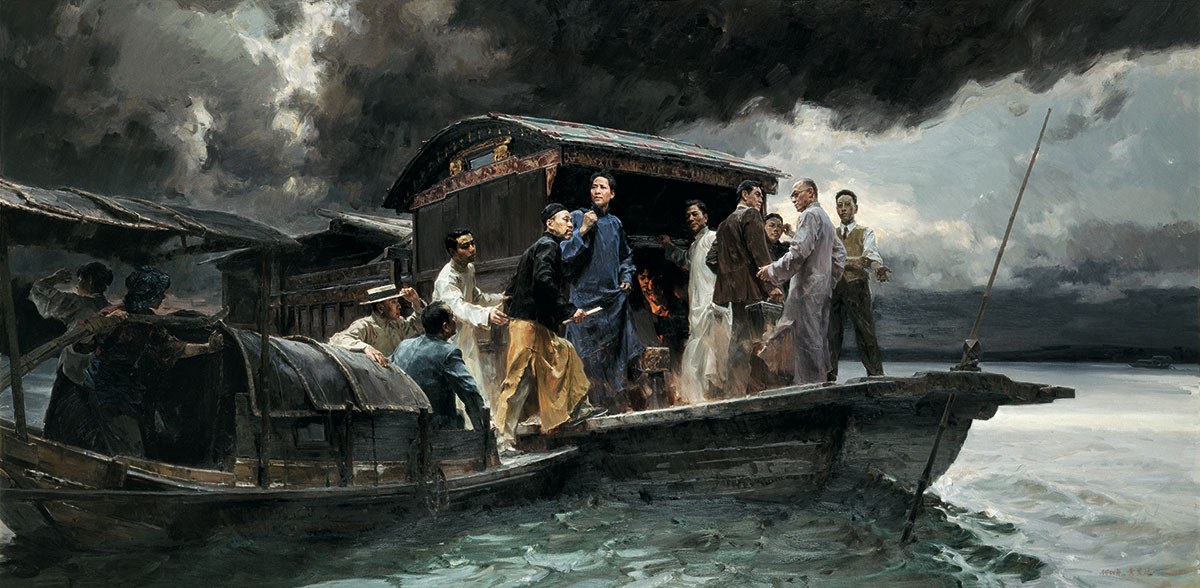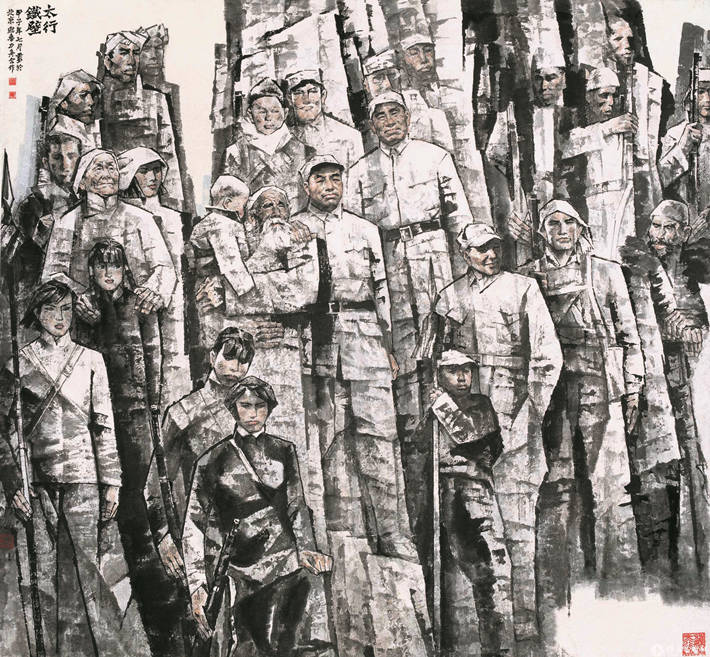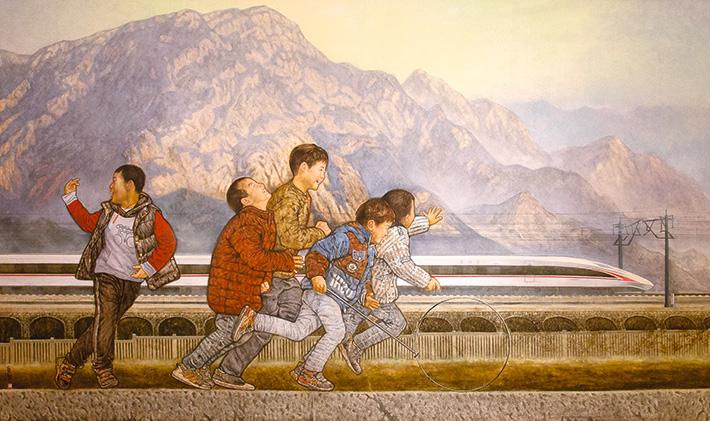Classic Art: Memories of the Past

A large art creation project to celebrate the 100th anniversary of the founding of the Communist Party of China (CPC), themed “Remain True to Our Original Aspiration and Keep Our Mission Firmly in Mind,” has been a pioneering undertaking in China’s art history. The monumental project attracted the largest number of artists in the history of New China. It represented the peak of China’s art creation in the new era and would be embedded in the country’s memory.
This project adhered to a people-centered approach of art creation, kept pace with the times, and passed on traditional Chinese culture while learning from the strengths of various world cultures. It innovated thematic art creation both in form and content.

Xu Li, vice chairman and secretary of the Party branch of the China Artists Association, and a contemporary artist. by Dong Fang/China Pictorial
Classics with Creativity
The key to classic art creations is artists’ ability and creativity. Classic works showcase the characteristics of their times and contribute greatly to society.
Against the backdrop of the 100th anniversary of the founding of the CPC, Chinese artists created an abundance of high-quality works with different historical backgrouds and artistic languages. Works such as Setting Sail—The First National Congress of the Communist Party of China, The Founding Ceremony of the People’s Republic of China, and The Fight Against Poverty have traced the glorious journey of the CPC over the past century, recorded memories engraved in the hearts of the Chinese people, and produced a visual epic of spiritual strength.
Artists faithfully recorded every single historical step in China’s revolution and construction. Recording history through fine arts can help a nation remember its past, establish a correct view of history, and better understand and evaluate important events and figures in modern history.

Taihang Iron Wall by Wang Yingchun and Yang Lizhou,Chinese ink painting, 1984.The work depicts military leaders including Zhu De, Peng Dehuai, and Deng Xiaoping with soldiers, civilians, and the towering Taihang Mountain as part of an upright, indestructible fortification against Japanese aggression, demonstrating the patriotism and unity of Chinese soldiers and civilians.
In doing some work to promote the project, I felt from the bottom of my heart that China has ushered in the best era for creating history paintings. A group of outstanding artists have become artistically mature and achieved new progress in skill, concept, and expressive techniques.
We have seen many recent works in modern genres with the latest techniques of expression. For example, when creating works on the theme of the Red Army’s Long March (1934-1936), a daring military maneuver that laid the foundation for the eventual victory of the CPC, artists of the past tended to paint the characters with glowing faces and opt for brighter overall color and neater lines than those today. More recent works have tended to portray exhausted characters surrounded by darkness. By depicting the difficulties and challenges, they endeavor for richer, more real, and more impressive artistic appeal. The diversity and richness of Chinese artistic creation reflects a more open mind and broader vision of contemporary Chinese artists.
Integration of Chinese and Western Innovation
In the 1980s and 1990s, as China implemented the reform and opening-up policy, Western art poured in alongside Western modern and contemporary thought, casting a huge influence on contemporary Chinese art. Oil painting, which is not indigenous to China, has been influenced even more. How can we better express Chinese realities through China’s own methods of creation? Art creators today need to inherit the spirit of their predecessors in Chinese art circles to find answers.
From the late 1980s to the early 1990s, I visited Tibet Autonomous Region three times to accumulate experience for future artistic creation. I did a lot of research on Chinese and Western paintings and cultural differences. Gradually, I came to realize that Chinese art must blaze a path of its own. Artists must seek a reflection and combination of national character, characteristics of the times, and individuality. To depict national character, artists must dive deep into history. To portray characteristics of the times, they need to grasp the features of the times and master new techniques and skills. I worked hard with these notions in mind, and my paintings soon stood out among my peers around the globe.

High-speed Railway Links Mountain Villages by Cai Chao, Bian Tao, and Li Hongli, Chinese painting, 2019. From a unique perspective, this work vividly depicts how kids in a village react to a passing high-speed train.
The art of my predecessors inspires me a lot. Xu Beihong (1895-1953) showcased elements related to Chinese folk tales and mythology in his masterpiece The Foolish Old Man Removes the Mountains. Dong Xiwen (1914-1973) produced figure sketches and landscape paintings with unique lines in Tibet. Chinese-French painters Zao Wou-ki (1921-2013) and Chu Teh-chun (1920-2014) developed a deep understanding of Song Dynasty (960-1279) paintings and excelled at expressing Chinese artistic concepts. Wu Guanzhong (1919-2010) employed considerable blank space in his paintings and combined dots, lines, and planes with refined skill. These artists incorporated a wealth of Chinese elements into their oil paintings and formed their own unique styles through creative innovations on Western oil painting art.
Over the past decade, the China Artists Association has launched several large-scale art creation projects and exhibitions for many important occasions. More than 3,000 high-quality art works have been produced, including more than 500 massive pieces. These works represent the memory of the country, and their artistic value will be judged by generations to come. I believe that in the future, more classic works will testify to the power of faith and the great spirit of the Chinese nation and showcase its spiritual strength in the new era.